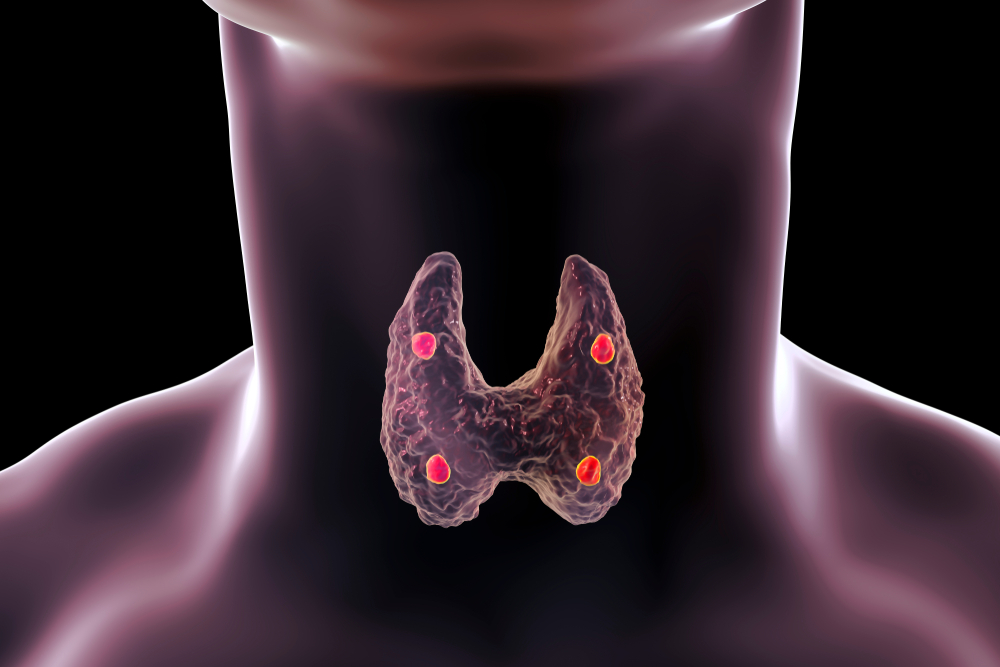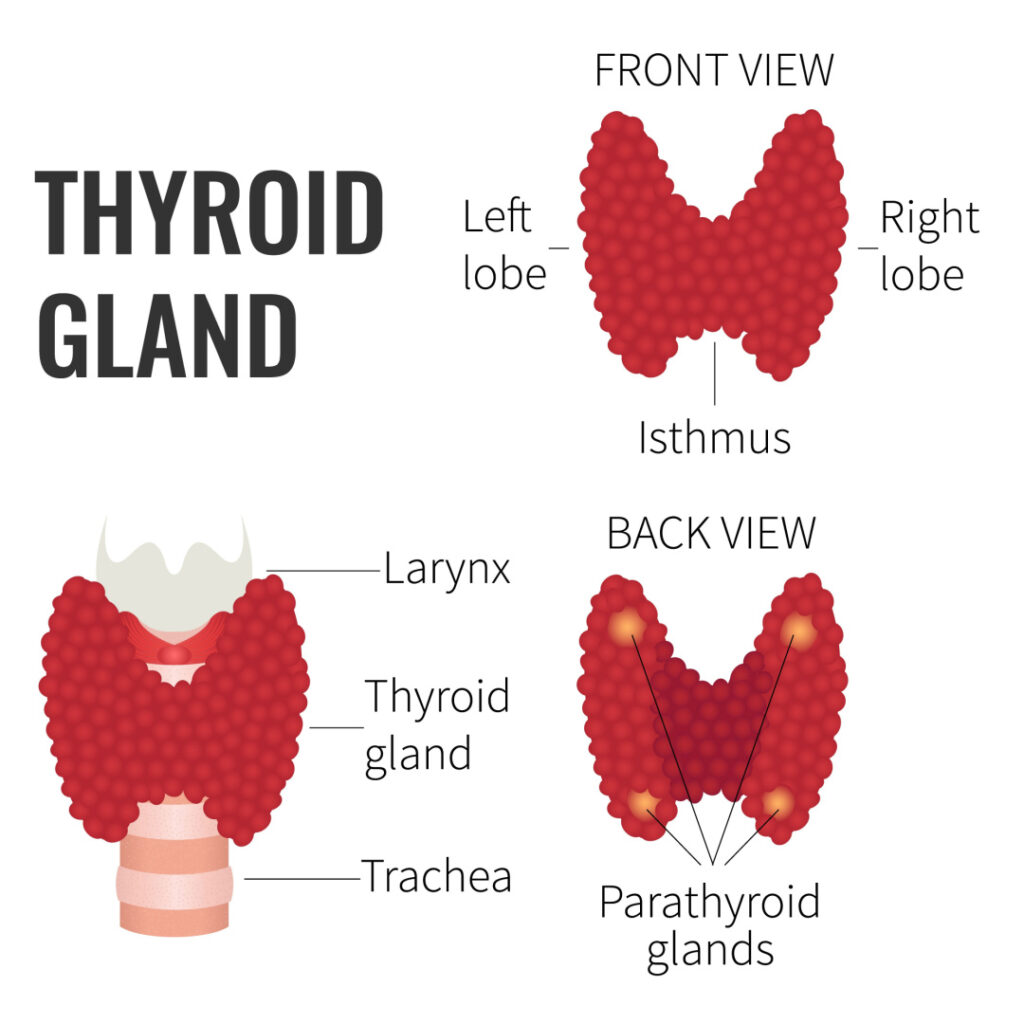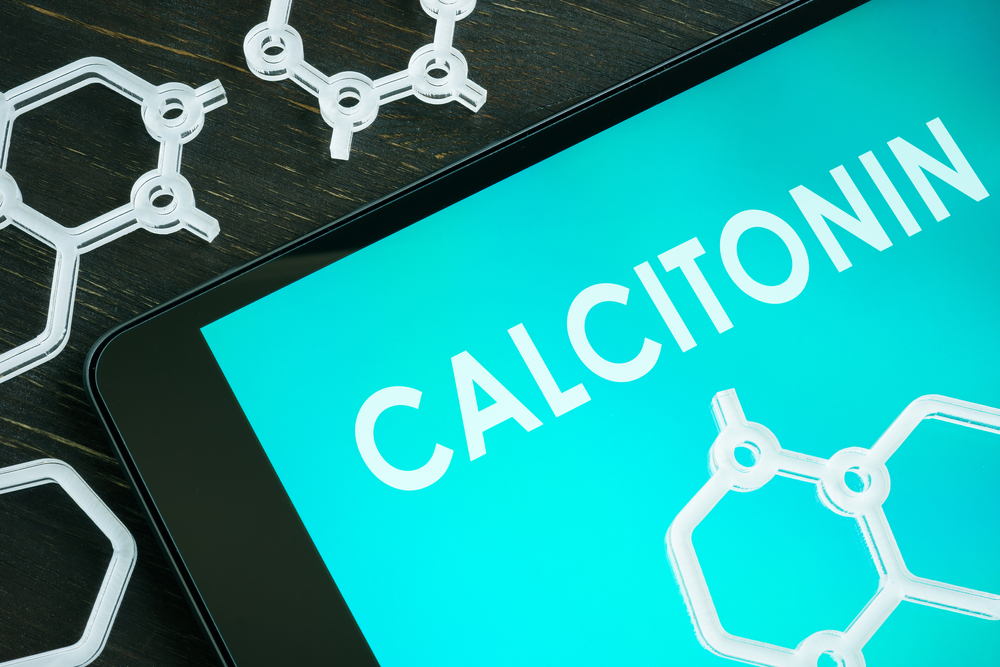What's On This Page?
ToggleToday’s discussion is about the thyroid gland – a small yet powerful player in our overall health.
The human body is an intricate and wonderful masterpiece. As a pharmacist, my role before writing books and making supplements involved working with healthcare providers and patients to manage medications for a variety of health conditions.
This article will take you on a journey through the structure and function of this fascinating gland, and I’ll try to make this trip as engaging and as conversational as possible!
Your thyroid gland is located just below the Adam’s apple and wrapped around the windpipe. It resembles a butterfly. Its two lobes (or wings) are connected by a narrow strip of tissue called the isthmus. Despite its small size, measuring only about 2 inches in length, the thyroid gland has significant responsibilities.
Behind the thyroid gland (and impossible to see on imaging scan is your parathyroid gland – actually, there are 4 parathyroid glands). In the digitized image shown here, you can see the 4 parathyroid glands as red dots. They regulate calcium levels not thyroid hormone. They are named “parathyroid” because they’re beside your thyroid gland.

Thyroid Gland – It’s like a Conductor!
Think of it as a conductor of an orchestra, with the different sections of the orchestra representing various systems of the body. The conductor doesn’t play any instruments but guides the pace and harmony of the orchestra.
Similarly, the thyroid gland regulates the pace of the body’s metabolism and harmonizes various bodily functions. It helps you feel warm, and it helps with hair and nail growth.
You may be wondering how it got its name. The thyroid gland was first identified by the ancient Greeks, who named it “thyreos,” translating to “shield,” due to its resemblance to the shape of a shield. You can see in this picture how it actually looks like a shield. The term was later adopted into Latin as “thyroides” and finally into English as what we now call the “thyroid gland.”
The gland was studied and described in medical literature over centuries, but the hormones it produces were not discovered until much later. The thyroid’s role in metabolism wasn’t confirmed until the late 19th century, thanks to the pioneering work of Sir William Gull and Dr. Theodor Kocher. In 1909, Dr Kocher won a Nobel Prize for his work. This discovery was a significant milestone in endocrinology.

Hormones Secreted
The magic of the thyroid lies in the hormones it secretes: Triiodothyronine (T3), Thyroxine (T4), and Calcitonin.
The ‘3’ and ‘4’ refer to the number of iodine atoms in each hormone. Intriguingly, our bodies absorb iodine from dietary sources, which is then utilized by the thyroid gland for hormone production.
T3 and T4 control our body’s metabolic rate – the speed at which we convert food into energy. People who are obese almost ALWAYS have hypothyroidism, whether it’s diagnosed or not! The thyroid hormones are like the body’s thermostat, controlling everything from our heart rate to the speed at which we burn calories. If you are constantly cold, you’re likely low in thyroid hormone.
When these hormones are in a healthy balance, we feel energetic and our metabolism functions optimally. Our hair, our eyebrows and nails are beautiful and grow properly. We no longer have dry skin. We feel great and have mental clarity.
An imbalance, however, can lead to conditions such as hypothyroidism (low thyroid function) or hyperthyroidism (overactive thyroid).
I’ve written an article you might be interested in if you have anxiety or depression, or hyperthyroidism: Mental Health Problems Tied to Undiagnosed Hyperthyroidism.
Calcitonin
Calcitonin, the less celebrated thyroid hormone, has a critical role in regulating calcium levels in the body, working in concert with the parathyroid hormone from the parathyroid glands.
Together, they ensure proper bone development and nerve and muscle function. Calcitonin is a hormone that helps regulate calcium levels in the body, particularly playing a role in bone health. It’s produced by the C cells (also known as parafollicular cells) in the thyroid gland. While there are conditions that affect calcitonin production, they tend to be distinct from those that cause hypothyroidism.

To understand the marvel of this hormone factory, it’s important to note that the thyroid gland doesn’t work alone. It’s part of the larger endocrine system and closely coordinated by the hypothalamus and pituitary gland, two small but mighty structures in the brain. This trio works in a feedback loop known as the hypothalamic-pituitary-thyroid (HPT) axis.
Here’s how it works
The hypothalamus senses low thyroid hormone levels and releases thyrotropin-releasing hormone (TRH), which prompts the pituitary gland to produce thyroid-stimulating hormone (TSH). In turn, TSH stimulates the thyroid gland to make and release more T3 and T4.
When enough T3 and T4 are present, the hypothalamus and pituitary gland reduce their release of TRH and TSH, respectively. It’s a classic example of a negative feedback loop in action.
When the HPT axis gets disrupted, thyroid disorders may ensue. For instance, if the thyroid gland isn’t responsive to TSH, it won’t produce adequate thyroid hormones, leading to hypothyroidism. This condition often results in fatigue, weight gain, and feeling cold. On the other end of the spectrum, if the thyroid gland produce
s too much hormone (often due to a tumor or inflammation), it results in hyperthyroidism, with symptoms including rapid heart rate, weight loss, and feeling hot.
As a pharmacist, it’s my privilege to help others. And as a thyroid thriver myself, I’ve written a paperback book called “Thyroid Healthy” which has helped people manage their thyroid conditions, often through hormone replacement therapy (thyroid medication or dietary supplements).
Understanding the thyroid gland’s anatomy and function is integral to making sense of these conditions and their treatment strategies. Although small and often overlooked, the thyroid gland is a testament to the body’s intricate design and function.
A well-functioning thyroid equals a happier, healthier you. So, take care of this little butterfly-shaped powerhouse in your neck. It works hard to keep you at your best. If this topic interests you, watch this VIDEO.

Suzy Cohen, has been a licensed pharmacist for over 30 years and believes the best approach to chronic illness is a combination of natural medicine and conventional. She founded her own dietary supplement company specializing in custom-formulas, some of which have patents. With a special focus on functional medicine, thyroid health and drug nutrient depletion, Suzy is the author of several related books including Thyroid Healthy, Drug Muggers, Diabetes Without Drugs, and a nationally syndicated column.



